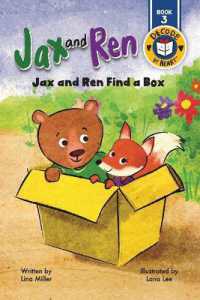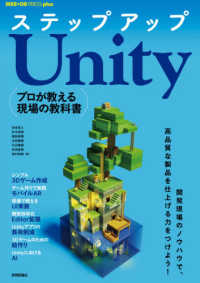Full Description
Research shows that vocabulary is the best support for students' comprehension of narrative and information texts. Often, vocabulary instruction focuses on a few target words in specific texts. However, to understand the many new words in complex texts students need to know how words work. This book, written by an award-winning authority on reading instruction, shows teachers how to make small changes to teach more words and also how words work. Many of these small changes involve enrichments to existing vocabulary practices, such as word walls and conversations with students. Each chapter includes descriptions of teachers' implementation of small changes to support big gains in students' vocabulary. This book, which has sufficient depth in research and theory for graduate and undergraduate courses in vocabulary instruction, also offers practical steps that K-8 teachers can use in any reading program to help all students grow their vocabulary.
Teaching Words and How They Work shows teachers how to:
Identify the most important word families to teach.
Teach students to use opening text as background knowledge for comprehending the rest of the text.
Use word walls with more purpose and greater student engagement.
Select the right words to teach from new information texts.
Better understand limitations of leveled texts and how to adjust.
Use assets and address challenges to support English learners.
Access free mentor and teacher resources online at textproject.org.
Contents
Contents
Preface ix
1. Learning Words and How Words Work 1
Vocabulary and Texts: A Two-Way Relationship 2
Vocabulary Instruction: A Focus on Relationships Among Words, Not Individual Words 4
How to Implement New Vocabulary Insights: Small Changes = Big Results 8
The Last Word 10
2. Making Small Changes in Vocabulary Instruction 11
Small Changes = Big Results: WHY 12
Small Changes = Big Results: WHAT 13
Small Changes = Big Results: HOW 15
The Last Word 20
3. Why a Small Group of Word Families Is So Important 25
The Evidence 25
Small Changes = Big Results 35
The Last Word 38
4. A Short History of English and Why It Matters 41
The Evidence 42
Small Changes = Big Results 49
The Last Word 53
5. Recycling and Remixing: Multiple Meanings and Uses of Words 54
The Evidence 56
Small Changes = Big Results 61
The Last Word 64
6. The Vocabulary Networks of Narrative Texts 66
The Evidence 67
Small Changes = Big Results 77
The Last Word 80
7. The Vocabulary Networks of Informational Texts 82
The Evidence 83
Small Changes = Big Results 91
The Last Word 94
8. Vocabulary and Text Complexity Systems 98
The Evidence 99
Small Changes = Big Results 107
The Last Word 111
9. Different Labels But the Same Concepts: English Learners 113
The Evidence 114
Small Changes = Big Results 119
The Last Word 123
Children's Literature and Instructional Texts 125
References 131
Index 139
About the Author 154








